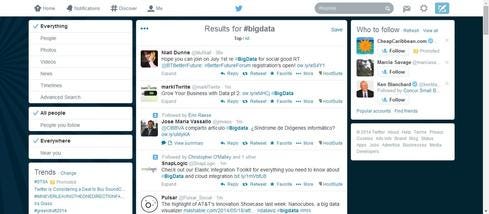The Data-Driven Workforce: 5 Critical RolesThe Data-Driven Workforce: 5 Critical Roles
To stay competitive, companies must maintain a data-savvy workforce. Here are some key roles to fill.


10 Big Data Pros To Follow On Twitter
10 Big Data Pros To Follow On Twitter (Click image for larger view and slideshow.)
Data is the lifeblood of digital organizations. I've seen a European retail bank generate an average 500% sales increase from its marketing campaigns, for example, by segmenting the customer base and using advanced analytics to determine which products to offer to each segment. To find and unlock this kind of data-driven competitive advantage, however, business leaders need to develop a more data-savvy workforce.
We're starting to see a transition to a more data-oriented workforce, in which existing roles take on a revived importance and new roles have arisen from the need to manage and fully exploit data.
Here are five key roles to develop as you strive to build a data-driven organization:
Chief Data Officer: The chief data officer is becoming increasingly important as companies treat data more as an enterprise asset. In fact, according to our research at Accenture, two thirds of organizations have appointed a senior figure such as a chief data officer to lead data management and analytics for their business.
[Yes, mere IT mortals can break into big data. Here's how: Big Data Job Hunting: Unconventional Advice.]
Data Steward: Data stewards maintain the quality, availability, and security of data and seek to improve collection and presentation of data across the business.
Data Scientist: Data scientists build analytical models and algorithms. This role has been named "the sexiest job of the 21st century" by Harvard Business Review, yet it is increasingly difficult to hire.
Analytic Champion: Analytic champions lead analytical initiatives, generally from the business owner position. They understand the value behind insight, and they challenge IT to expose more data for analysis.
Business users: Business users make up approximately 70% to 80% of the workforce. They put the results of analytical models to work and actively push IT and data communities for more.
Recognizing that not all organizations have analytics talent readily available, here are a few recommendations for building up these capabilities:
Take a team approach. Create a team of people who may individually lack the full skillset of a data scientist. As a group, they may bring all the talent needed.
Widen the recruiting pool. Search outside your industry, and even outside the business world. For instance, graphic designers often offer creativity and an imaginative view on data visualization.
Focus on team learning. It's essential to encourage members to learn skills from other team members. When one member is unavailable, others can jump in to help, which creates a unit that is more resistant to attrition.
Consider a "buy versus build" approach. Explore potential skills services that could be purchased from a third party.
Next step: better questions, better technology
Having the right people and roles isn't enough. To seek out innovation, all roles within a company -- from data stewards to business users -- must become savvy interrogators of data.
Companies can't be satisfied wrestling with a perplexed "What happened?" Rather, they must insist on getting to higher-level questions -- "Why and how did it happen?" -- to identify opportunities for growth.
Trying to meet today's business technology needs with yesterday's IT organizational structure is like driving a Model T at the Indy 500. Time for a reset. Read our Transformative CIOs Organize For Success report today. (Free registration required.)
About the Author
You May Also Like






